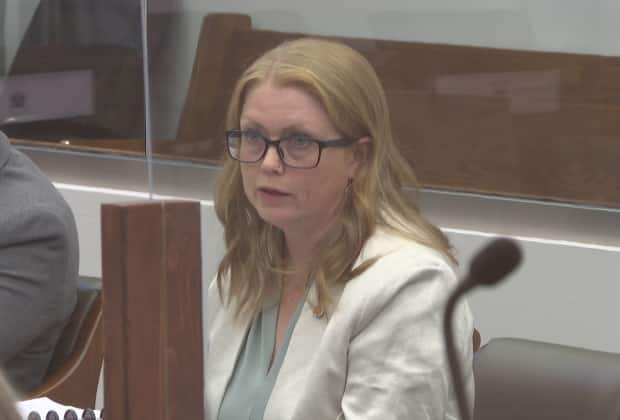How development planning can have a big impact on climate change

Where P.E.I. allows building to happen could be a big part of how the province reaches its net-zero targets, a legislative committee heard Thursday.
The natural resources and environmental sustainability committee asked the P.E.I. Institute of Professional Planners to speak about the importance of a provincial land use official plan, which would prescribe where Islanders could build certain kinds of developments — and where they couldn't.
While this kind of planning can be important for any jurisdiction, it is especially important for P.E.I., where 44 per cent of greenhouse gas emissions come from transportation. The province has identified encouraging active transportation as a means to bring those emissions down.
"If we're building everywhere, it makes it harder to provide transit everywhere. If we're building everywhere, it makes bike paths longer and more convoluted," said institute president Samantha Murphy.
"If we're just looking at building based on an application that's received and not all the other objectives that relate to service delivery then we can undermine the sustainability of those services."
Research shows that if someone's destination is more than three kilometres away they are unlikely to use active transportation, said Murphy.

This is where planning comes in.
Put together your province in a way that will encourage people to use active transportation, or so that you can design a transit system that can get people conveniently where they need to go, without making it unreasonably expensive.
"One of the items that we'll touching upon when we're looking at our official plan policies is kind of looking at densifying, so intensifying, incorporating mixed uses, and making sure that active transportation trails are readily accessible and easy to use," said institute past president Robert Zilke, who also appeared before the committee.
A provincial plan is necessary, said Murphy, because cities and towns don't cover enough ground, and high prices for housing are pushing people into rural areas.

"Even when a municipality is doing planning — and that's only 10 per cent, give or take, of the landmass — they can only control the areas within their boundaries," she said.
"Even if they have a very extensive plan that thinks about emissions and compact communities and how they're designed and whether we have density, those councils, those municipalities have limited control of what happens outside."
That doesn't necessarily mean everyone living in urban areas, she said.
But it does mean looking at smaller towns and crossroads where services could be improved, or perhaps services existed in the past but don't currently.



